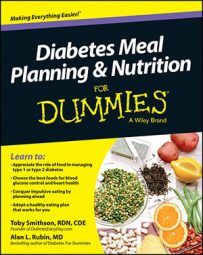Since the appearance of salad bars in restaurants, people have often seen them as the healthy choice. Even though salad greens make a great foundation for a healthy meal, the range of ingredients available to add to your salad can leave you with an unexpected load of calories, fat, and carbohydrates. It’s the small amounts you add that can lead you to consider those ingredients as irrelevant.
The table compares two salads built at the same salad bar.
| Salad 1 | Calories | Salad 2 | Calories |
|---|---|---|---|
| Lettuce (2 cups) | 110 | Lettuce (2 cups) | 110 |
| Small tomato | 20 | Small tomato | 20 |
| Cucumber | 5 | Cucumber | 5 |
| Carrots | 12 | Carrots | 12 |
| Cauliflower | 14 | Avocado | 188 |
| Green peppers | 6 | Diced ham | 115 |
| Beets | 20 | Hard-boiled egg | 72 |
| Green onions | 11 | Bacon bits | 50 |
| Kidney beans | 50 | Sunflower seeds | 100 |
| Radishes | 5 | Olives | 75 |
| Snow peas | 15 | Croutons | 135 |
| Tuna | 78 | Shredded cheese | 175 |
| Light dressing | 30 | Salad dressing | 140 |
| Total | 376 | Total | 1197 |
You can see that the higher fat items — avocado, ham, sunflower seeds, and salad dressing — can really pile on calories. Because you’re adding these items with a spoon, it’s difficult to keep up with what, and how much, you need to account for.
Plus, you’ve probably noticed that some salad bars have expanded to include prepared creamy salads, like macaroni salad, and even dinner-type food like fried chicken. Oh, yes, and it’s the same price to go through ten times as it is for one.
The salad bar can still be a great place to make a complete and healthy meal, but it’s necessary to know where you’re likely to grab extra calories and carbohydrates in small packages. Otherwise, sticking to the salad bar for your health is wearing the healthy halo — feeling good about a healthy behavior that really isn’t healthy after all.
Here are a few items typically found at salad bars that add calories fast if you don’t manage the amounts you add carefully:
Bacon, pepperoni, or salami
Black or green olives
Bleu cheese and feta cheese
Croutons, sunflower seeds, and nuts
Anchovies and fish packed in oil
Marinated salads, like oil-based coleslaw
Raisins and other dried fruit
Canned fruit (often in syrup)
Salads made with mayonnaise
Shredded cheese
Creamy salad dressings
Carbohydrates are especially important, because losing track of your carbohydrate food is losing control of your blood glucose. Watch for carbohydrates in fresh or canned fruits, raisins and dried fruit, beans and peas, potatoes, croutons, crackers, rice, pasta, and any mixed or creamy salads that include these items — potato salads and three-bean salads are common.
The point is not to declare salad bars off limits or label them as a bad choice without reservation. The point is to demonstrate that it’s not only possible to lose track of what you’re eating from the salad bar, it’s easy to lose track.
If your dinner meal recommendations are in the 700-calorie and 90-grams-of-carbohydrate neighborhood, it’s difficult to imagine you can sail past those numbers scooping ingredients with a tablespoon. But, when you add it up, it’s actually way too easy.
So, here’s the secret. Start your salad with nonstarchy or low-calorie vegetables like lettuce, spinach, alfalfa sprouts, bean sprouts, broccoli, carrots, cauliflower, celery, cucumber, peppers, mushrooms, onions, radishes, tomatoes, and zucchini. Then, if you need to add carbohydrates to your meal, add them from beans, potatoes, corn or peas, whole-grain bread or crackers, and fresh or dried fruit.
Find some healthy protein — tuna, egg, or soy — and a little healthy fat from nuts, olives, or a touch of a noncreamy salad dressing.
Just know what you’re adding to your salad (the nonstarchy vegetable part) before you start adding — the calories mount up quickly. You have to know your stuff — 2 tablespoons of bleu cheese dressing is 150 calories and 16 grams of fat, for instance.
The information is available in pocket reference books, at numerous websites or phone apps, or you can make your own cheat sheet on an index card. Contrary to popular belief, the salad bar is no place for amateurs.
You can save calories, fat, sodium, and sometimes carbohydrates by passing completely on the salad dressing and using vinegar, salsa, or freshly squeezed lemon or lime juice instead.

